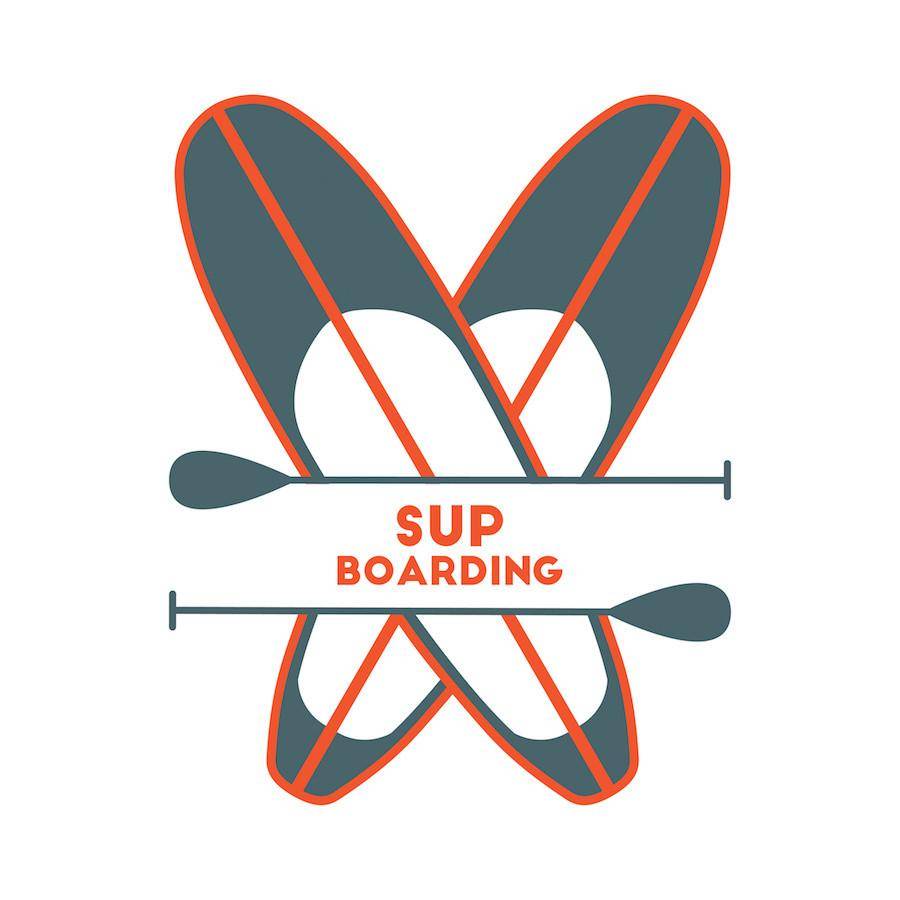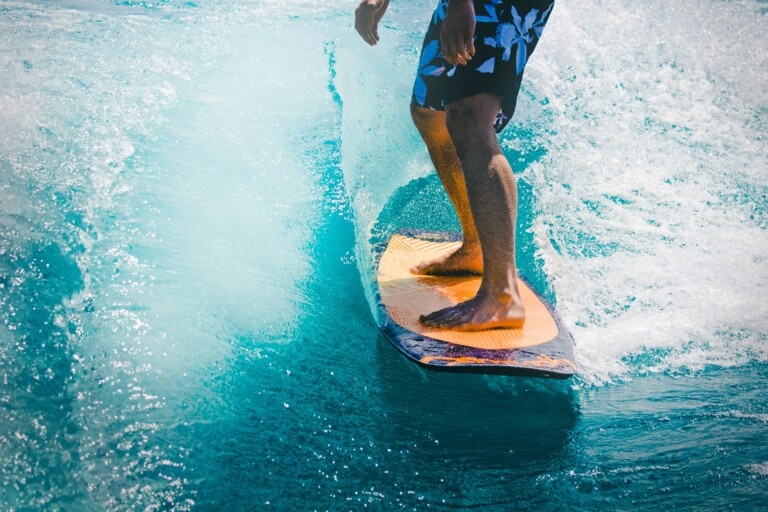You may have heard of Stand Up Paddling, or its acronym SUPing. The roots of stand up paddling can be traced back thousands of years to early stand-on canoes and rafts, but over past few years stand up paddling has rapidly spread around the world.
What’s behind the recent popularity of this water sport? One reason is advancements in surfboard technology. New materials allow large boards to be lighter and easier to transport, as well as cheaper to produce. Also, you can Stand Up Paddle on nearly any body of water, it’s a great workout and it’s fun! The perspective you get from standing on water really can’t be replicated any other way.
If you want to get into SUPing, here are a few basics to help you get started:
THE BOARD
All SUP boards have three things in common:
- A handle in the middle of the board for easy transport
- A rubberized deck pad to cushion your feet and help with grip
- Fins to keep the board tracking through the water.
Other than that, SUP boards can vary quite a bit. What type you need or want is largely dependent on where you’ll be riding, what conditions you’ll be paddling in and how you’ll transport your board.
SIZE AND SHAPE
Most SUP boards are between 10 and 14 feet in length and weigh between 25 and 40 pounds. There are two main types of board designs, planing hull (or flat) all around boards and displacement hull (or v- shaped) racing boards. A planing hull board is mostly flat, with a nose that curves up slightly. This curve keeps the board gliding across the top of the water as you paddle.
A racing board usually has a v-shaped displacement hull, which slices through the water as you paddle. Racing boards are faster and less taxing to paddle over longer distances, but they’re also generally thinner in width and less stable than flat boards. The longer and wider a board is, the more stable it will be so beginners often opt for longer, wider boards.

SURFBOARDS V. SUP BOARDS
What’s the difference between a surfboard and a SUP board? The simple answer is volume. Stand up paddle boards are designed to keep you floating on the surface of the water even when you’re standing still. Although some surf boards can be 10 to 11 feet in length, they’re generally not as thick or wide as a SUP board, so won’t stay buoyant if you try to stand up in flat water.
When selecting a board, take your height and weight into account. The lower the board sits in the water, the less stable it will be.
THE PADDLE
The SUP Board isn’t the only gear you’ll need to get started, you’ll need a paddle as well. Much like SUP boards, all SUP paddles have two things in common:
- A blade at the bottom
- A handle at the top.
They can be made from many different materials including plastic, aluminum, carbon fiber and even wood. The material of the paddle contributes to its durability, weight and price. Paddles can also be adjustable or fixed height. The length of your paddle generally corresponds to your height, so an adjustable paddle is a good option if you are renting gear or want to share with friends.
WHERE TO PADDLE
Versatility is part of what makes stand up paddling so popular. While traditional surfing requires waves, you can Stand Up Paddle nearly anywhere there’s water. Oceans, rivers, lakes and even large pools are all fair game. Flat, calm water is easiest for beginners and warm water or a wetsuit are nice to have, since you may fall in once or twice as you’re getting a feel for the board.
That being said, SUPing is easy to learn and nearly anyone can do it. As you developyour skills, you can expand your SUP range. There are boards designed to surf waves and specific boards for long distance open ocean travel. There’s inflatable, rock tolerant SUP boards to ride river rapids (you’ll want to add a life jacket and helmet to your gear for this one), and large stable boards designed for tours through mangroves and estuaries.

GETTING STARTED
We recommend renting a board and paddle for your first few times so you can figure out what you like before making a purchase. However, no matter what kind of board you ride or where you paddle, you’ll be getting a great workout and a new perspective on your surroundings. So, if you’ve been thinking about starting stand up paddling, give it a try! It’s easy to learn and quickly rewarding. We’ll see you on the water!











